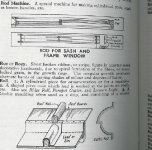Honduras Rosewood is scientifically known as Dalbergia Stevensonii, it belongs to the leguminosae family.
Honduras Rosewood grows in Belize (British Honduras), in fairly large patches along rivers but also on inter-riverine and drier areas; mostly between the Sarstoon and Monkey Rivers. It is a medium to large tree, reaching a height of 50 to 100 ft, with trunk diameters to 3 ft. It commonly is forked at about 20-25 feet from the base.
I like the look of Honduras Rosewood. The heartwood is pinkish brown to purple with alternating dark and light zones forming a very attractive figure, distinct from 1- to 2-in.- thick yellow sapwood. It has a medium to rather fine texture, with the grain generally being straight to slightly roey. The wood has a low to medium luster. When it is freshly cut, the wood has an aromatic odor, which dissipates after aging.
Honduras Rosewood is reported to be a moderately difficult to work, due to its hardness. It dulls cutting edges and tends to ride over cutters. Its Janka Hardness rating is 2200.
I hope, as always, to see many nice examples of this week’s wood. I also have a question. The word above "roey" I see used a lot in the descriptions of grains, but I cannot find it in a dictionary. Is it perhaps misspelled? If so, what is the proper spelling?
Tracy
Honduras Rosewood grows in Belize (British Honduras), in fairly large patches along rivers but also on inter-riverine and drier areas; mostly between the Sarstoon and Monkey Rivers. It is a medium to large tree, reaching a height of 50 to 100 ft, with trunk diameters to 3 ft. It commonly is forked at about 20-25 feet from the base.
I like the look of Honduras Rosewood. The heartwood is pinkish brown to purple with alternating dark and light zones forming a very attractive figure, distinct from 1- to 2-in.- thick yellow sapwood. It has a medium to rather fine texture, with the grain generally being straight to slightly roey. The wood has a low to medium luster. When it is freshly cut, the wood has an aromatic odor, which dissipates after aging.
Honduras Rosewood is reported to be a moderately difficult to work, due to its hardness. It dulls cutting edges and tends to ride over cutters. Its Janka Hardness rating is 2200.
I hope, as always, to see many nice examples of this week’s wood. I also have a question. The word above "roey" I see used a lot in the descriptions of grains, but I cannot find it in a dictionary. Is it perhaps misspelled? If so, what is the proper spelling?
Tracy
